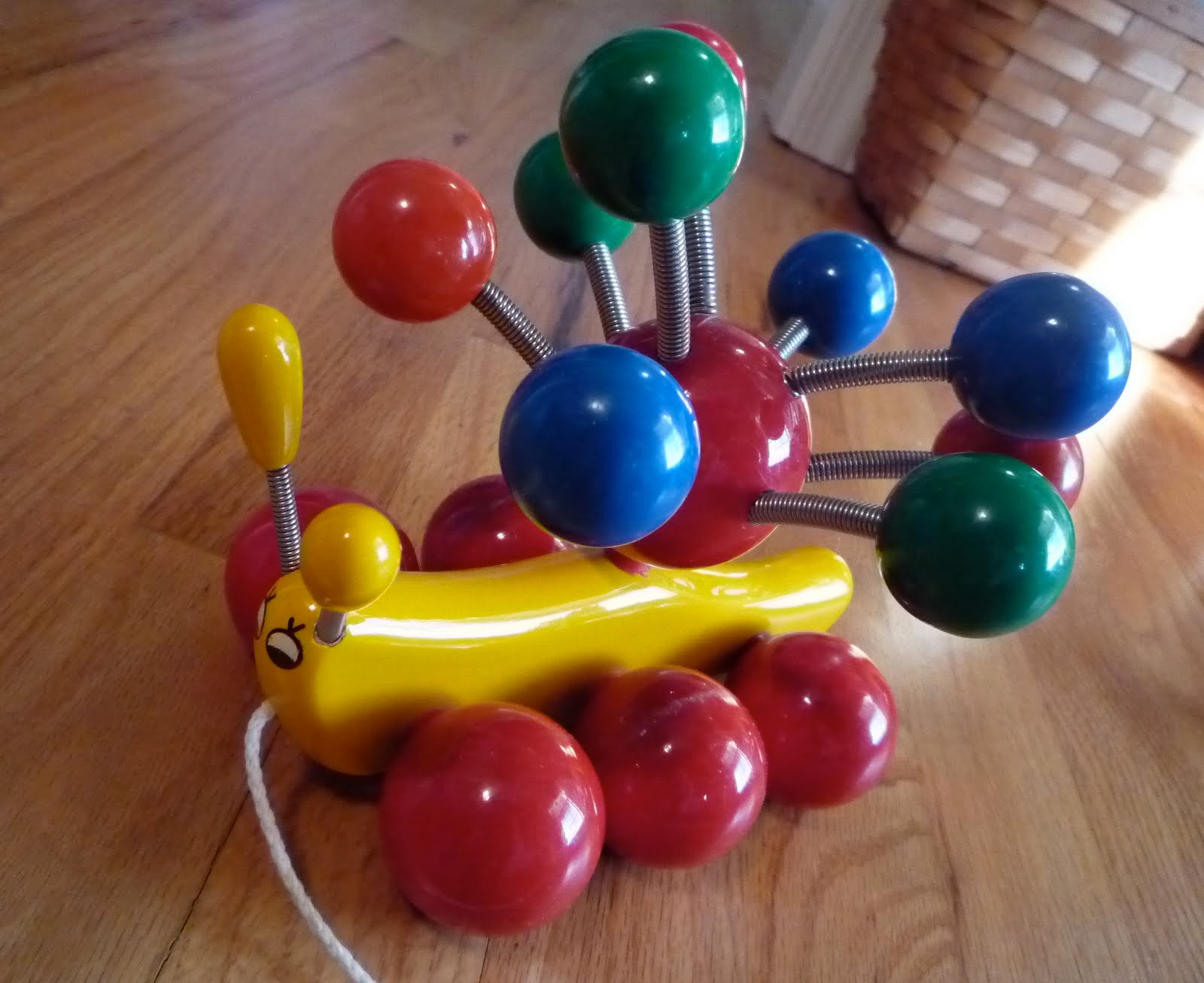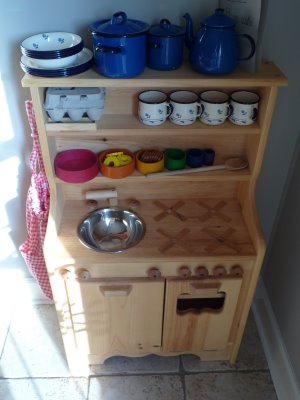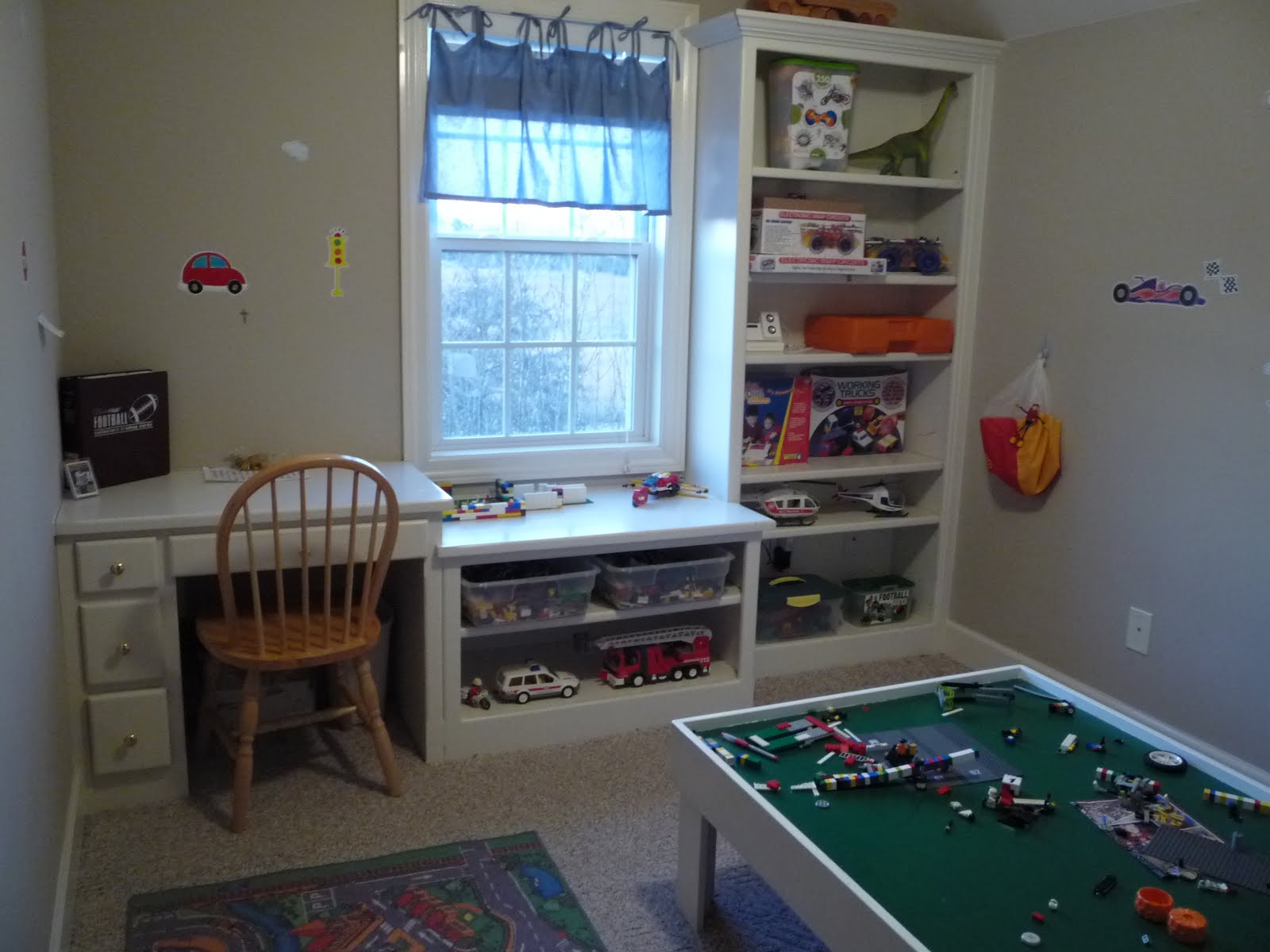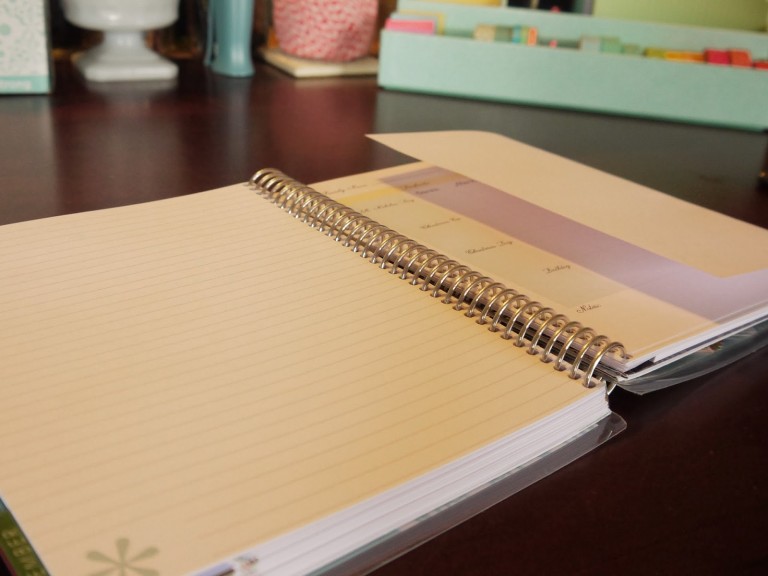TOYS!!! Choosing, Organizing and Managing

Casey writes:
I was wondering if maybe you could give a young mother of two babies under 2yrs of age in a very small apartment some advice. I am in great need of a purging of childrens’ toys after Christmas, but I am unsure how to decide what to keep and what to give away as I do anticipate there will be more children to come in the future. How do you go about such a task?
Ask any mother what her never-ending, constant, on-going, always-uphill battle is and she will most likely reply, “managing toys”.
Casey, you ask a great question, and I’ll give you my thoughts on it. Let’s talk about toys in general first. I’ll share with you a few of the things I try to keep in mind when it comes to toys and playthings as well as the organization and maintenance of them. I think it’s helpful to identify a reasonable “toy philosophy” (LOL! Is there such a thing?) then we can spend some time talking about managing it…because Christmas and birthdays happen, and well meaning friends and family members may not have read your soon to be agreed upon “Toy Manifesto.”
We live in a pretty materialistic society and toy marketing is ruthless! How is a mother to keep order in her home when a new plastic whiz-bang enters the home every other day? This post is not meant to inspire guilt, nor as a judgment on anyone’s home making or toy management, nor is it meant as a blanket toy snob statement. I just want to share how our family has come to terms with this challenge.
Detachment is supposed to be painful. Keep that in mind when you and your children are going through things. Some thoughts in approaching detachment:
“Detachment from things gives us the freedom we need to follow Christ. Goods are only the means.” Francis Fernandez, In Conversation with God, Volume 2, Lent and Easter, 16.1
“Material goods are good since they come from God. They have been put by God at man’s disposal since creation began, for his growth and development in society. We are administrators of these goods for a time, for only a short term. Everything should lead us to love God – Creator and Father – and the things He has made and given us. Francis Fernandez, In Conversation with God, Volume 2, Lent and Easter, 16.1
“The best examples of poverty are those mothers and fathers of large and poor families who spend their lives for their children and who through their effort and their constancy – often without complaining of their needs – bring up their family, creating a cheerful home in which everyone learns to love, to serve and to work.” St. Josemaria Escriva, Conversations with Monsignor Escriva, p. 111
Establishing a Toy Philosophy
First, look to your spaces. Casey, you mention that you are living in a very small apartment. There are 4 people living in that space. If you have so much going on visually in that space…bookshelves, toy boxes, toys lining every bit of floor space, toys in bathrooms, bathtubs, bedrooms, a toy basket in the kitchen…it’s time to purge right off the bat. There’s nothing wrong with having toys available and accessible in your home, but if you are space challenged make room and reclaim some quiet spaces.
If children are overwhelmed with choices in toys and visual clutter in a space, they tend to shut down and play with…a cardboard tube in the middle of the room. That is my experience anyway. Less is more. Quality over quantity.
I’m not a fan of cheap, plastic, mass-produced toys. There. I said it. Ripped off the band-aid. I know that eliminates at least 80% of the toy clutter in your home. If it’s ugly, if it’s trendy (think Spongebob, Spiderman), if it requires batteries, if it makes noise and lights up, if it has only one purpose, and…if it’s cheap/plastic/mass produced…I think very carefully about letting it into this home. There are a number of reasons for this beyond my own need to keep a lid on toy take-over in this home, and the first that comes to mind are the recent and unsettling recalls of toy products produced overseas. Another reason is that these toys take up valuable storage space/real estate and don’t see a lot of action. That’s not a good return on investment, and space is valuable here.
Very simply, Casey, the above is the litmus test for me in determining what goes and what might stay. Is this a toy that you can see your grandchildren playing with? If yes, keep it. If not, consider allowing it to move on and possibly bless another family.
A Few of Our Favorite Things
I’m thinking of some of our favorite toy choices here. I don’t keep all that I’m about to list out at one time; we rotate toys seasonally.
- Wooden play kitchen with a few pretend foods and accessories. Keep it simple and nice. You don’t need to outfit your child’s play kitchen with with an 84 piece cookware set, the pretend mixer/blender with 22 attachments, enough plastic groceries to feed the neighborhood, and a 12 place setting. Invest in just a few pieces. Homemade pieces would be so wonderful for this – I just love felt food (great inspiration here!). My little one loves cutting apart these wooden vegetables!
- Magna Tiles. All my kids love to build with these and the possibilities are endless.
- Blocks of all kinds. We’re very fortunate in that my brother made the kids a beautiful set of blocks in all shapes and sizes from some scrap oak. What a wonderful project this would be for an older sibling or dad in the shop! Sand down the corners nicely and rub in a nice coat of mineral oil. If DIY isn’t your speed, you might consider some Keva blocks.
- Dolls for girls. Our doll of choice are Corolle dolls. Our older daughter still greatly enjoys the historically based dolls made by American Girl. Everyone has their own comfort level with American girl dolls.
- Gears! Gears! Gears!
- Wooden play structures like barns, farms, and doll houses. Our daughter loves her horse stable.
- All things Playmobil. Fair warning: Playmobil comes with lots and lots of little bitty parts. My solution: Leave a couple of accessories out and put the rest in a ziploc bag to be tucked away. Everything is just of great quality and lasts and lasts through the kind of play a young child dishes out over the years.
- Zometools. I know…the name doesn’t tell you much, but these are a huge hit around here. My mom gave the kids a smallish kit one year, and they loved it and used it so much that the next year we expanded the collection for them! Think hands-on geometry. You can find many kits that could really enhance your collection, and I just noticed a very intriguing book – Zome Geometry: Hands-on Learning with Zome Models.
- A nice set of dominoes.
- I wanted so much to link you to one of our all-time-favorite toys – T. J. Whitney’s Wooden Marbles and Blocks, but I don’t think they’re available any more. That’s too bad. If you ever see a set somewhere, grab it! My kids really enjoy these! A set of glass marbles can also be a wonderful thing!!
- Building kits like K’Nex
, Legos
, Zoob
, Erector Sets
.
- Bucket of vehicles
. I can’t tell you what an unimaginable hit this has been in our home. The little vehicles are well built, and in addition to cars there are also planes, trucks, boats, helicopters, and tractors in this set.
- Lincoln Logs
and other similar wooden building toys. I really like the Roy Toy versions which are made in the USA!
- Inflatable hopping horse
. This is so great for gross motor skill development, and really doesn’t require much room in the house! We keep ours indoors!
- Wooden puzzles. I find most of mine at thrift stores or consignment shops.
- Play silks of all sizes, colors and shapes for dress-up and pretending. You can dye your own silks which is a great deal less expensive.
- Don’t forget great art supplies! One of my absolutely FAVORITE things are inexpensive Dover coloring books for kids. The images are a wonderful quality. I also highly recommend Prang brand art supplies! They’re inexpensive and absolutely GREAT quality! They will please all ages!
For the 18 month – 3 year old:
- Fabric covered soft blocks
- Sensory balls
- Wooden nesting cups
- Soft Corolle doll for girls
- Fun chunky vehicles for boys
- Sorting and stacking cones and stacking rings
- Hammering toys
- Wooden nuts and bolts
- Lacing beads
Wow!! Have you made wishlists for the next 10 years worth of gifts? I hope I’m not promoting too much purchasing, thereby defeating the purpose of this post by offering all these links!
I do want to say that with this long list of amazing store-bought toys absolutely nothing stands the test of time better than the classics – the cardboard tube, the clean plastic bowl, pots and a wooden spoon, a stick, a big sheet and some clothespins. Don’t discount your child’s imagination if your budget or space is limited. No matter how great the toy, it isn’t for you if it takes you outside of your means! Children should stretch their imaginations. It is a value to have to dig deep and make the best of something! There are treasured memories there.
Organizing and Maintaining Toys
So, now that you know what toy shelves look like around here, let’s talk about organizing and maintaining a reasonable number of toys in the home.
The Cornerstones of my toy management:
- Open shelves for storing and displaying toys
- Daily quick tidy
- Weekly clean-up
- Twice yearly purge (Advent and Lent)
- A toy rotation space
I used to have laundry baskets for toy storage and it was an epic disaster. Nothing was sorted, and only the few things on top of the basket were ever touched. Small pieces were always tossed everywhere. You can figure the same will happen if you do the toss and tidy with any big toy bin. The one exception to this is sorting collections in a bin, which I do use. Downstairs, I keep smallish collections in open bins. They’re easy to see, and easy to clean up because any child can see that blocks go in this bin and dolls go in this bin.
In general, I’ve found I prefer to use open shelves for toy storage. Each toy collection is contained in something – a bin, a basket, box – and that container sits on the shelf. Some toys just sit out on the shelf, like a Playmobil firetruck. Everything can be seen, which means that the toys that are out see playtime and they are easy to pick up. The kids know right where belongings go when it’s time to clean up.
- Wall shelves – one per child. Home Improvement stores offer some really nice options that can be mounted to the wall. Each child can have one or two shelves on the wall near their bed for storing a few books and treasures. I like this idea because you can extend the use-ability of the shelf by screwing cup hooks to the bottom of the shelf to hang a Rosary, scapular, small handbag/purse…all out of reach of littles in the room.
- A basket for each child. This might be a nice option for a younger child. If it doesn’t fit in the basket, it can’t be out in the room. I know this breaks my original rule about NOT storing toys and collections in a big bin, but I’m not envisioning anything gigantic, and large families have to brainstorm outside the box.
- An inexpensive dresser. You might search Craigslist or thrift stores for a simple dresser you could paint and add to a room. Each person could claim one drawer to store treasures.
Tip # 4: A place for everything and everything in its place. It’s important that children know and can be responsible for where things belong.
I’ve talked about how we quick tidy before. As a review, we only quick tidy the downstairs living spaces, not everyone’s room. Room clean-ups occur at a different time – once a week. A quick tidy has a time limit – everything has to be done in 10 – 15 minutes. If spaces can’t be tidied in 15 minutes I know we have WAY too much stuff out! When children are in the dump/destroy ages (children between the ages of 18 months and 3 years old) I keep FEWER toys out.
The best habit I have ever acquired is that of quick tidying our living spaces at least once daily!
Even with a few toys out, weekly maintenance is necessary. I keep my expectations clear, and I follow through every week in checking rooms. Using a checklist format, I break down the details of a room clean up on paper for the kids. The most successful and helpful feature of this room clean up is to first place all baskets, bins, and boxes that contain the individual collections in a row along a wall in the room. The next step is to gather all the toys and pieces together – from under beds, in the hall, bathroom, on the floor – into a big laundry basket. With the containers all in a row on the floor along the wall and easy to get to, the kids go through the laundry basket one toy at a time, finding a piece, locating its collection, and replacing the item in it. The last step is to put the collections back on the shelf. Keeping strict limitations on the number of toys out assists greatly in the success of any clean-up. The kids are responsible for their own rooms – I do not clean them (except for the twice yearly purges)! Less out = less to clean.
Somehow toys multiply! Managing the toys in our home, I’ve found it best to spend two times each year taking a serious look at the things we’ve got around here! The two most fitting times are during Lent and Advent – both times that Holy Mother Church calls us to great detachment from material belongings. Both the children and I are involved in this process together.
Advent is the perfect time because it allows us to thoroughly clean and purge excess before the Christmas gifts start rolling in, and Lent is well suited as the season itself calls us to deeper detachment. Lent purging can include all those well meaning gifts received over Christmas that don’t really need to continue to live in your home.
Tip # 6: Family members who deeply enjoy giving gifts have received joy in the giving of the gift. Once the gift is in your home, it is up to you how you use it and how long you keep it. Keep very special items, but once a gift is yours, in your home, you can choose to re-gift materials if they need to move on and bless another family.
We start these purges exactly as we begin a weekly room cleaning, lining the wall in a room with collections, gathering all extraneous pieces and parts in a big laundry basket and sorting as much as possible. In addition to this I open every drawer, the lid on every bin, every notebook, every box, the closet, the dresser – I open EVERYTHING.
If I find trash (paper bits, pieces that are broken, toys that are broken or mangled) – I call it trash – and we throw it out. Right then. We don’t store trash.
The kids are allowed to keep a limited group of toys out at one time. I pick a set number – usually around 4 or 5 – and they put that number of collections on the shelf. If there is plenty of room on the shelves, I might tell them they can each put one more toy collection on the shelf. Just so you know, I consider one group of toys, like legos, to be one collection. (And just so you know…in our home we have two very large rooms upstairs – the boys share one room, and eventually the girls will share the other…Doodlebug still shares a room with Rob and I.)
A Toy rotation space ~
All the remaining toys that are not going back to the shelf must be put away somewhere. We reclaimed a closet, put a lock on the door and use that as our toy rotation closet. You could reclaim a linen closet, the top of the kids closets, or purchase bins for storing under YOUR bed. Whatever space you use as your toy rotation space, keep it locked down as much as possible.
We have a set policy in place for our toy rotation closet:
* items can only be traded out, so one toy in for one toy out
* the children’s room must be clean and have been checked before an exchange can take place
* the toy exchange official (mom or dad) must be present – no independent exchanges here!
This toy exchange closet has been nice for us. When the children have decided they’re tired of the toys they have out, they can ask to exchange it for one of their other toys. That toy is new again, full of possibility.
Children who become very attached to their things ~
I have one child who becomes very, very attached to things. He kept the corner of a page of a missal that his 4 month old baby sister ripped and gave him. Sentimental is his middle name. For this child especially, I feel a particular obligation to help him detach comfortably and gently from material things. I do a couple of things for this child:
- Give this child one small bin with a closing lid. This is the sentimental stuff bin. All sentimental papers, cards, letters that the child wishes to save go in this bin. If it doesn’t fit, something has to be purged. The rule is that the lid has to close.
- Assist this child in organizing collections. Set up a notebook with sheet protectors for saving favorite sports articles, provide a shoe box for sports cards.
- Don’t purge immediately. Do purge WITH your child’s input. Once you’ve allowed the kids to choose the toys staying out on their shelves, gather the excess and sort into two piles – definitely keeping and the *I want to get rid of this but my child doesn’t* pile. Work with your child, maybe set another limit – we can keep 3 of the 5 things in this pile, you choose them. Allow them some ownership of the choices made. For the child that attaches significantly to things, detaching is much more painful, and should be more of a process whereby that child takes ownership of decisions to let go.
Give this child especially the concrete tools needed to detach from material things.
Well, Casey, I hope this gives you some ideas of how we have learned over the years to tackle toy management, and might help you make those decisions on what to keep and not to keep. For those that have asked how I handle toys, I hope this post answers some of your questions…or at least gave you a few links to fun toys. Take whatever ideas might work for you in your home. If you take one thing from this post about toys, remember this:
Less is more! Quality over quantity!
What may have been a material blessing a few months or even years ago, may now be just another thing cluttering up your living spaces and becoming an obstacle to detachment and order in your home. Allow those things to move on and bless another family!









This is just beautiful and soooooo well timed!!!
Thank you so much for this post, Jennifer–wonderful! I love getting a peek at your toy-managing philosophy!
Thank you so much for this post. It is so helpful and clear. I love that it is rooted within the church calendar too, so I hope to begin following your guidelines this lent.
Yes, thank you. I have my wish list for next Christmas ready to go!!!
awesome post!!! you are soooo organized!!! thanks for sharing!
Fabulous advice, Jennifer! Our favorite toy: a kitty litter pan and a plastic tablecloth. What do we do with it? Sensory tray, rice play, sand play, dishwashing of plastic dishes, baby doll bath, imaginary “aquarium” (with plastic fish,etc.), finger painting, shaving cream painting, all on the kitchen floor. This is the best entertainment for the 2-3 age group!
Thank you for this wonderful post. It is so very inspiring! Especially since I am working hard at detachment and trying to organize our home.
Great post — lots of food for thought! Thank you.
This was wonderful! Managing toys (and other clutter) is something I'm constantly working on. Finding that balance is tricky. Your tips are helpful. I especially like the toy rotation.
Oh! One more question: Do your children keep their toys in their rooms, or do you have a playroom, or both?
Take it from a mom who lived this philosophy for nearly 30 years. This is the gospel truth. Follow it well.
Great post, thank you! The whole rotation thing is something I fall down on and I really appreciate what you wrote. I'll definitely be mulling over this for awhile.
Any chance you want to take on a post about what to do with all that wonderful art/projects your children create? (if you haven't already, that is – I looked through your archives a bit and didn't find anything, but it certainly wasn't an exhaustive search!)
Thanks again!
A couple of questions, Jen:
If your kids clean their own rooms, how long does it take them every week? How long did it take them to learn to sort stuff into the right bin? (How about your 5 yo?)
After reading this post, I had a couple of thoughts. One was that, although my (dis)ability as a housekeeper certainly plays into the chaos that is often our house, my house also works against me. For instance, there are no closets that will lock in the entire house. The laundry room doesn't have a door and there is no broom closet. After breaking four gates in 2 or 3 years, we've just left it open, which means the boys often raid mops and brooms to use as toys. (You can imagine how that works out.) With 3 (now 4) boys in 1 room (no bunk beds) *and* with the destructive level of my boys, no toys can be kept in their bedroom. They're all out in our very small family room area. Except for the Legos, which are kept in a bin in our long hallway… for about 20 minutes after the boys clean the hallway every Friday. Otherwise, they end up all over the floor. The boys also dismantled the set of plastic drawers I had for Star Wars action figures and Playmobil stuff because they insist on each having their OWN drawer. Sorting, as you might imagine, is a nightmare around here.
Your toy kitchen looks lovely. My boys broke ours soon after we got it by standing on the oven door. The 2 yo just likes to take out the sink and throw random stuff — videotape, sippy cups, etc. etc. — down inside the hole. Sometimes I wonder if we shouldn't just get rid of everything but a few foam swords, some capes, and the Legos. (even though the Legos can be a major pain!!!)
Wow! Thanks Jen. Great advice as always. I can't wait to get to work on reorganizing. I especially like the idea of the yearly purges working with the liturgical calendar.
It is a very helpfull post, and you helped me a lot with it, thanks
Thanks for this post. I have a child who has a hard time detaching. She is very empathetic and gives feelings to inhuman objects. This makes it very difficult to give or throw anything away! This has given me some much needed skills for dealing with her especially during lent when I want to declutter our house. Thanks again!
Thanks, Jen. This was well timed. My toy philosophy was very similar to your own starting out, but somewhere recently I let myself get caught up in getting my children the “cool” things that everyone else has. So this past Christmas we got many, many cheap, plastic, battery powered nightmares, which, of course, now no one plays with anymore. And it's only February! Over the last month I have really been revisiting my toy philosphy and for birthdays (we have one every month for the next few months) we are going with one or two items that are well made and encourage imaginitive play. Thanks for posting this! God bless.
Love to hear also what you do with your child's art creations as well.
I let them be up for about two weeks or until the next creation comes along. I then take a picture of it. That picture becomese part of our screen saver. My children enjoy seeing their creations float across the screen. They do not feel so bad about it being destroyed.
Whew!!! I'm late to the party. So glad the post was helpful to so many!
Let me see if I can tackle a few of your questions!!
Sarah asks:
>>Do your children keep their toys in their rooms, or do you have a playroom, or both?<< We have kind of a weird arrangement here. Upstairs there are technically three rooms, two of which are mirror images of each other. Those are the kids rooms – one for the boys, one for the girls. Those rooms are actually more like “suites”. Sounds posh, but it's actually just very practical. There is a bedroom, a short hallway attached to the bedroom and then another room. That's the room you see pictured in the post. We use it as the playroom. This room is the room for toys. In the bedrooms you'll find beds and books and that's it! Amber asks:
>>Any chance you want to take on a post about what to do with all that wonderful art/projects your children create?<< I could try to do that sometime, but honestly, we just display it everywhere. I like to use the trim part of an entry way to affix artwork to. At the end of the year, we save our favorites in a portfolio. I have one for each child. Angela asks:
>>If your kids clean their own rooms, how long does it take them every week? How long did it take them to learn to sort stuff into the right bin?<< It takes as long as it takes them. They can drag it out forever, or be done in 45 minutes. Their choice. No privileges AT ALL until the room is clean though. No errands. No trips with Daddy. No computer games. Bupkus! Until the room is clean and checked. Every week. Hope this helps answer some of your questions!!! And, Casey, I'm so glad you enjoyed your post!!! 🙂 God bless!
Thank you for this post. I am thinking about how to do our own toy rotation and getting very excited about it.
We are very fortunate to have many well meaning relatives who bless our children with an abundance of toys, many of which are the mass produced, one purpose type. Many of the toys get donated after just a few months because no one plays with them. I have always wanted to create a wishlist to guide them in purchasing toys and books we would appreciate, but I just don't know how to go about doing it. Do you have any advice?
Thanks again!
Wonderful, wonderful, wonderful. Thank for this very helpful and inspiring post!
Jenn asks:
>>We are very fortunate to have many well meaning relatives who bless our children with an abundance of toys, many of which are the mass produced, one purpose type. I have always wanted to create a wishlist to guide them in purchasing toys and books we would appreciate, but I just don't know how to go about doing it. Do you have any advice?<< Well, with this one, you can only do so much. It's my opinion that this isn't a hill worth dying on. Some family members really receive a great deal of joy in giving a gift! They put much time and effort into researching or hunting and acquiring. Here's how I handle this: 1) I create a wishlist on Amazon first. We **offer** that to family. What they do with it is up to them. For some of our family, my husband will just ask if they are interested in a wishlist or an idea of the children's interest. It's just an offer. Some family might not like that, and others do. We're not pushy with this list. 2) We discuss with our children before opening gifts how to respond appropriately – thank you – no matter what!!! Even if it is a plaid, wool, fur lined bonnet. Thank you and a smile. 3) Gifts live in our home for a time and are appreciated. 4) During Lenten purge they may make their way onward, but the children have received joy from the gift and the giver received joy in knowing it was appreciated. Hope this helps, Jenn.
Thanks for this post! It sounds like we have a similar “toy philosophy,” but I don't rotate many toys… I am thinking that the exchange policy might work for us, too. Do you ever have trouble with a child who wants to exchange a toy over and over throughout the day? I could see younger children getting out a “new” toy, playing with it for five minutes, and then wanting to exchange it for something else. How do you handle that? Also, are there any toys that are always available – like the stuff in the play kitchen, or maybe some stuffed animals or dolls?
Also, I am curious about what other moms do regarding the sharing of toys. Does each child have their own toys, or are most of them shared? I have an almost 5 yr old and a 24 month old, and as the younger one is growing into imaginative play, she wants to play with things that have unofficially “belonged” to the older child, such as a play barn, a castle, a dollhouse… do you have a toy-sharing philosophy?
And I love the felt food – thanks for linking to it!!
Thanks jen, I really enjoyed this post. I have a very similar toy philosophy as regards what toys we like and what toys we purge (bleepy electronic ones!!)and it makes for such a nice peaceful home! I struggle with the toy rotation aspect, we don't put toys in the children's rooms and I childmind two little ones so there is more out than I would like but you gave some great ideas for managing that and I'm going to have a good look later!! Jen x
Erin asks:
>>Do you ever have trouble with a child who wants to exchange a toy over and over throughout the day?<< No. Because as I said in the post, there are some definite ground rules for exchanges: ** The room must be entirely clean
** The toy exchange official must be present.
My kids do not have a clean room except on a Saturday after they clean it entirely as part of their weekly chores, so that's the only time they could exchange a toy. My 5 yo has asked if he could get “x” toy out of the closet in the middle of the week. My response, “Sure. If you clean your room completely and I check it. You'll have to decide which of your toys you want to give back to get a new toy out.” This limits superfluous exchanges!!
>>are there any toys that are always available?<< Yes. The play kitchen is always present here in my kitchen, and always sees use by one of our children. Each of my children has one love that is always out. For my boys, that seems to be their bin of legos. For my older daughter, it's her wooden horse barn and American Girl dolls. But, they're not exempt from the “toy count”. In other words, if I say you may have 4 toys out TOTAL in your room, the Legos count as 1 toy. >>do you have a toy-sharing philosophy?<< Yes. Life in a family with more than one child requires it. There are very few things that are treasures that belong to only one child. VERY FEW THINGS!! In general, our rule is this: when a child has been given a gift for a birthday or Christmas, they have rights to the gift for 24 hours. After that, the gift must be shared. Of course, we have rules about how we treat materials here, so if someone abuses something, their privileges are removed, but in general, the sharing policy works here. Glad you love the felt food idea!! Enjoy, Erin! Thanks for all your questions!! I'm so glad you ladies are finding ideas in this post that you might be able to translate in your own homes. Take what might work. Bend it to fit your family and home. Leave all the rest! 🙂
Jen,
Thank you for a wonderful post! I have been enjoying your blog for a couple of months now, and this post could not have been more timely! A friend asked recently what toys have been a hit in my home, and it got me thinking about what toys my daughter has really valued and how that might guide what I purchase in the future. I created a “toy manifesto” without realizing it!
I have also struggled with the guilt of letting toys “go to bless other families” even when I know they aren't being appreciated by my daughter or, more importantly, aren't adding to our family's quality of life. Your perspective and encouragement on detachment have given me the vocabulary to express what I want for our family and the self-permission to “let go” without the guilt. Thank you so much.
And as for your list of favorites – well, now I'm going to have to go ahead with that wishlist I've been planning because the toys (the ones we DON'T own) seem right up our alley!
Thank you,
Jenny
Thanks so much for taking the time to share all your ideas. I may try the exchange thing, except my girls never play in their rooms, so maybe it would be that all the toys around the house have to be cleaned up before they can exchange anything. My almost 5 yr old is getting very good at putting away toys with minimal supervision. But not my 2 yr old, and I realize that is developmentally appropriate. So one more question… what about 1,2, and 3 r olds, and maybe some 4 and 5 yr olds as well, who cannot clean up their play spaces on their own? If my 2 yr old wanted to exchange a toy, I know I couldn't ask her to clean up everything else first…
Jenny,
Thank you so much for your kind comment!
Erin asks:
>> So one more question… what about 1,2, and 3 r olds, and maybe some 4 and 5 yr olds as well, who cannot clean up their play spaces on their own? If my 2 yr old wanted to exchange a toy, I know I couldn't ask her to clean up everything else first…<< Thanks for your question, Erin, because I do have a little one who is 2, and I bet others wonder the same thing. What about littles? I still operate with the same principle for littles – very few toys out at once, groups collected together in bins rather than in a big bin all together, and I do exchange toys, but that works differently. I offer bins of toys throughout common areas – right now there are a total of 5 bins/collections out for my 2 yo. These bins are in common areas, so she can play during lesson times, so that means they are located in the *quick tidy* zone that I spoke of in my post. Is my 2 yo responsible for pick up? No. But, we model how to tidy toys. I'll pick up a block and ask her to tidy it up…”put this with your blocks”. In this way, we're tidying and she's learning to sort and clean up at the same time. Now, when it comes to exchanges, here's what I do… I don't give my little people choices. I am watchful and I notice when there is boredom with the collections of toys, they no longer want to visit with certain/all of the toys out. I simply exchange toys myself – at night – without help!! When children are old enough to request a toy from the closet by name, they are generally old enough to have more responsibility in terms of clean up. Hope that helps give you an idea that the same idea/principle can work throughout the home, but with differing levels of participation from the children depending on the age. Still…less is more!
What a great post! How did I not see it all this time? I know I will have questions as I digest the post and read through the comments. Thanks for all your hard work!
Jennifer
What a great post thank-you. So glad I found your blog.
Thanks for sharing your ideas, so needed here! Now to figure out how to sort all those matchbox cars….